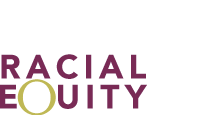
|
Please visit lgbtfunders.org to learn more about our current programming and ways to support racial equity in your grantmaking. |
 |
|
|

Reaching Underserved Populations
For decades, studies have emphasized how deeply embedded discrimination, produced across generations, has critically impacted the quality of life and self-advancement of communities of color. For LGBTQ people of color, these conditions are exacerbated by attitudes and structures that treat people differently based on their sexualities and their gender identities and expressions. As evidence, a growing body of research continues to demonstrate this "heightened vulnerability" among LGBTQ people of color—to health risks, verbal and physical violence, and institutional discrimination, among other areas. LGBTQ people of color also face the disregard of institutions; relatively unexplored as research topics and rarely considered as constituencies affected by public policies or in need of culturally and linguistically sensitive services. And this invisibility reverberates across the public and private sectors, where LGBTQ people of color are marginalized as leaders in key decision-making bodies. It compounds the problem when you consider that communities of color—as mapped by social scientists—often reside in neighborhoods with few resources, limited opportunity and, in many areas, environmental risks. Where, then, can foundations invest in these underserved populations and reverse these conditions?
Featured ToolsA visceral metaphor of structural inequality Case study: Racial inequities among LGBTQ youth of color |
||
|
|
Funder Tools For Racial Equity |
|
|
"American Indians, no matter what their sexual orientation, have lower life expectancy that the U.S. as a whole, have mortality rates from alcoholism that are 510% higher than the U.S. population as a whole, suicide rates 62% higher, tuberculosis 600% higher, and very high Diabetes II rates." ![]()
President, Native Americans in Philanthropy
"We still see far too many mainstream media reports that paint people of color, African Americans in particular, as monolithically homophobic—which ends up feeding a cycle of anger, frustration and distrust on all sides." ![]()
Senior Director of Media Programs, GLAAD (Gay & Lesbian Alliance Against Defamation)

|
| Join the Conversation |
| Register for Email Updates |
| Share Your Success Stories |
| Email Us with Questions to Explore |
| Join Us on Facebook |
| Support Funders for LGBTQ Issues |
HOME
Content and images © 1997-2022 Funders for LGBTQ Issues. All rights reserved.
Funders for LGBTQ Issues - 45 W 36th Street, 8th Floor - New York, NY 10018-7633 - 212.475.2930 - fax 212.475.2532 -